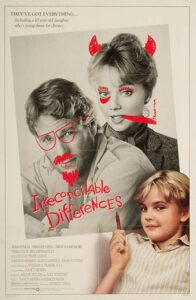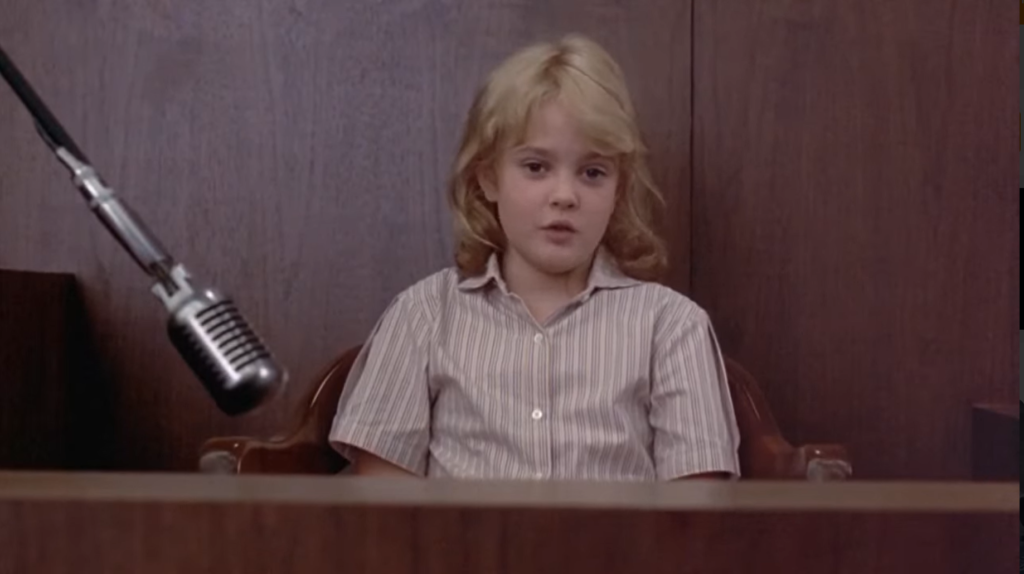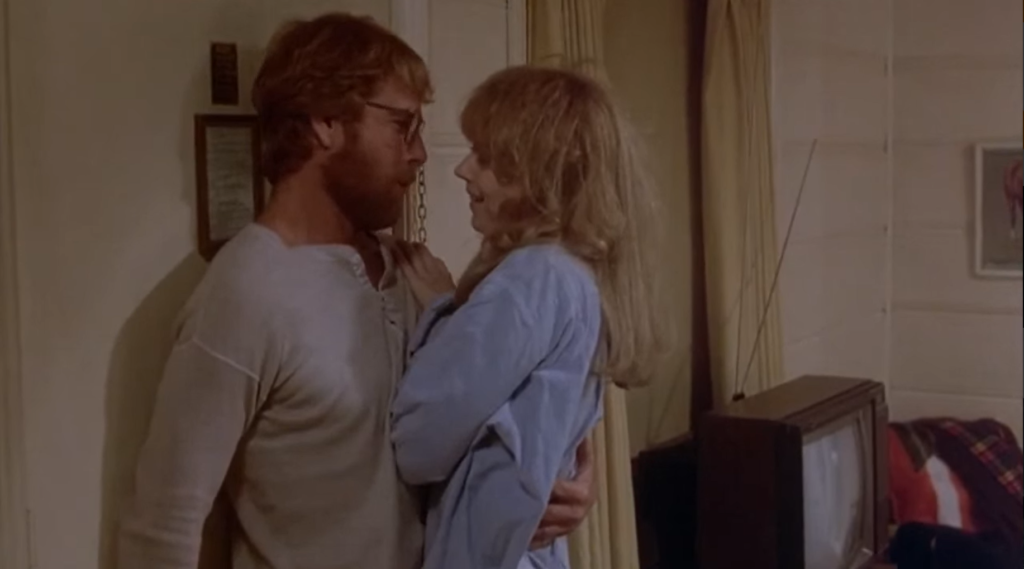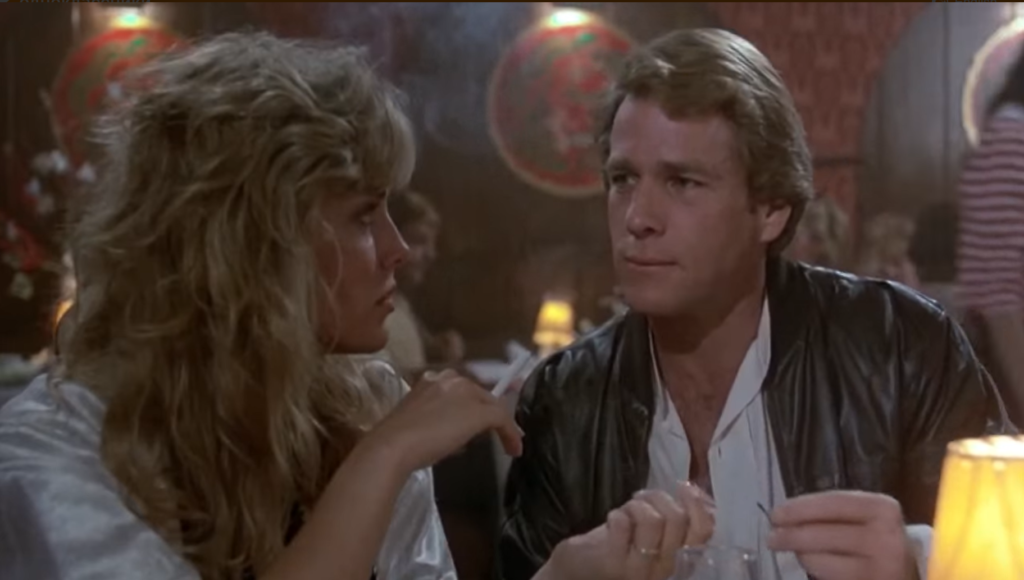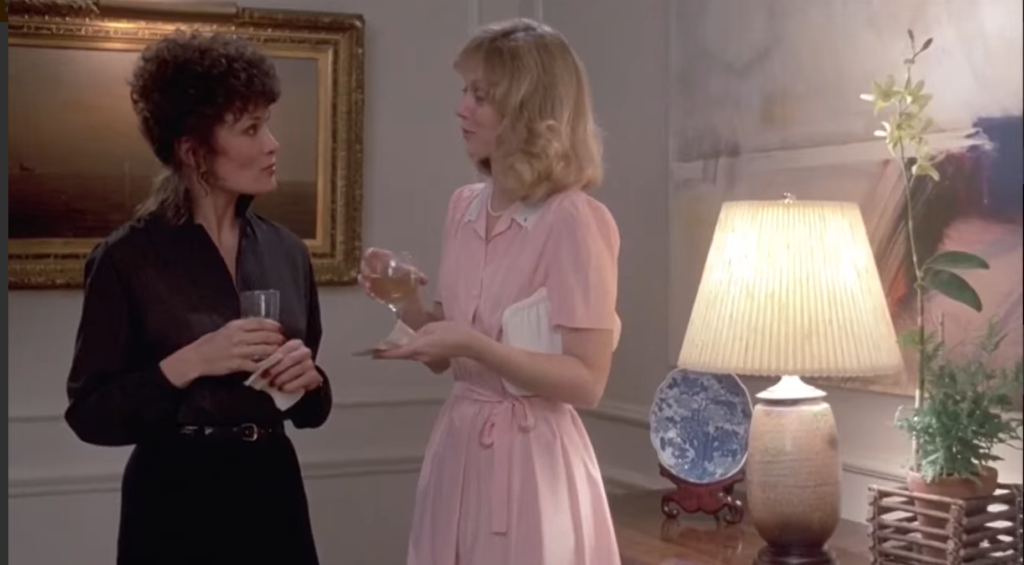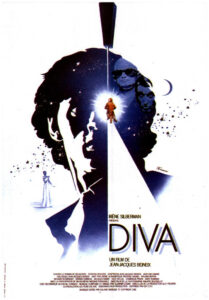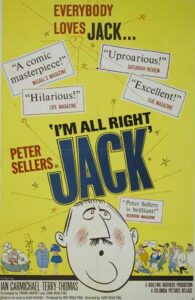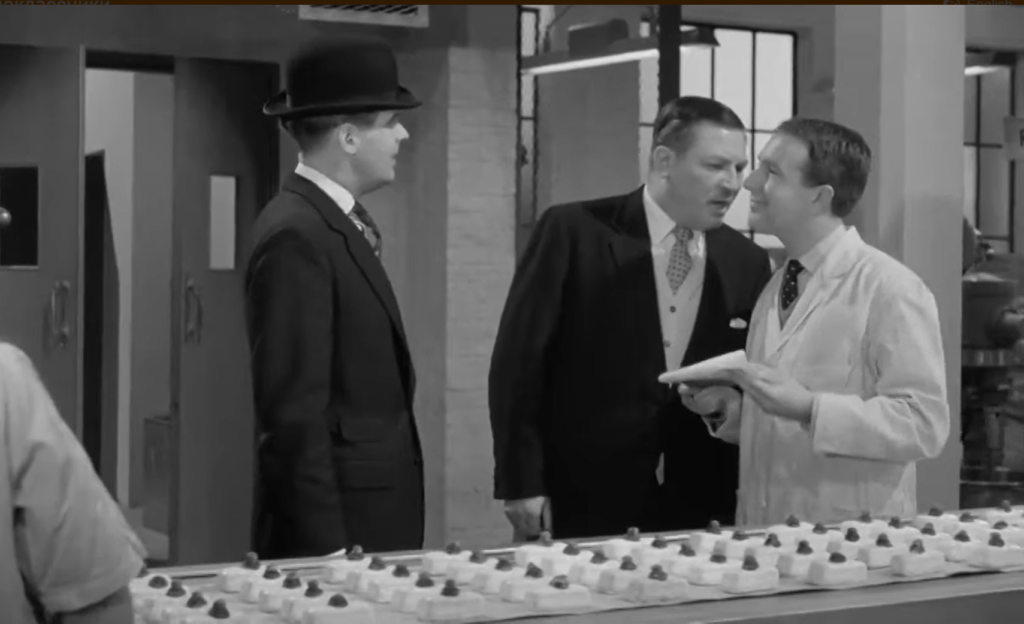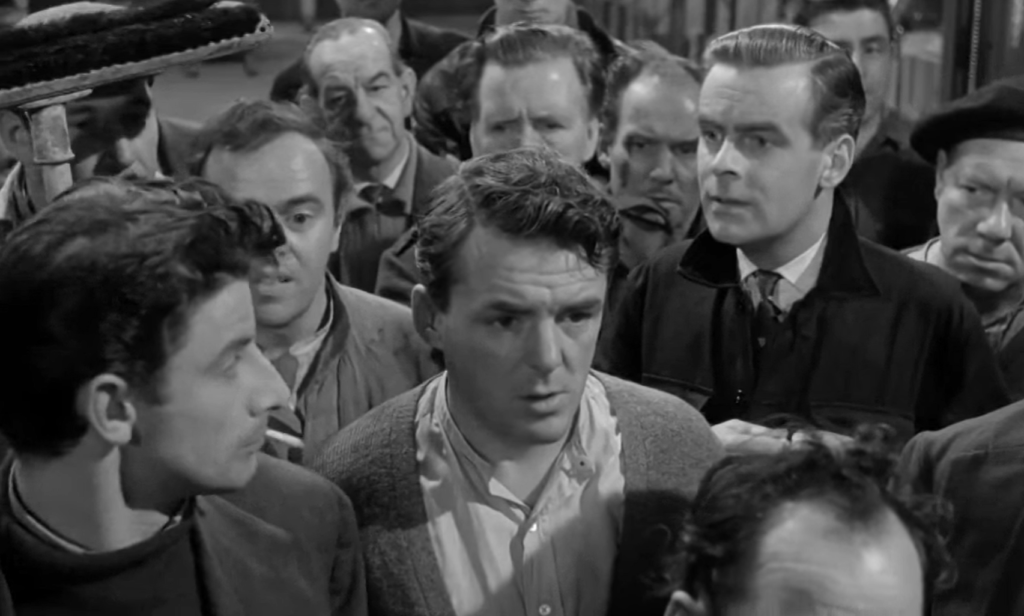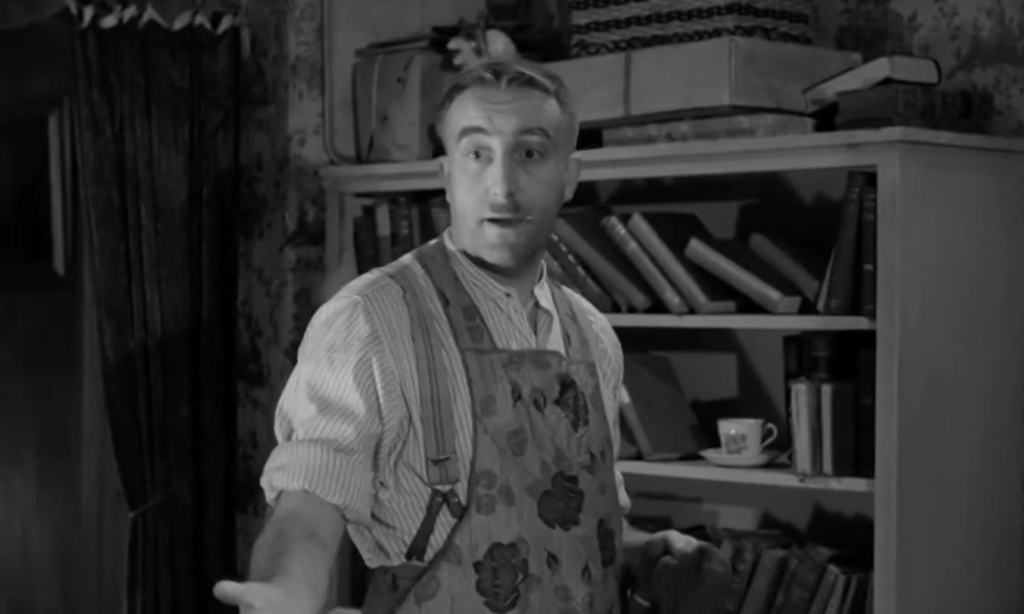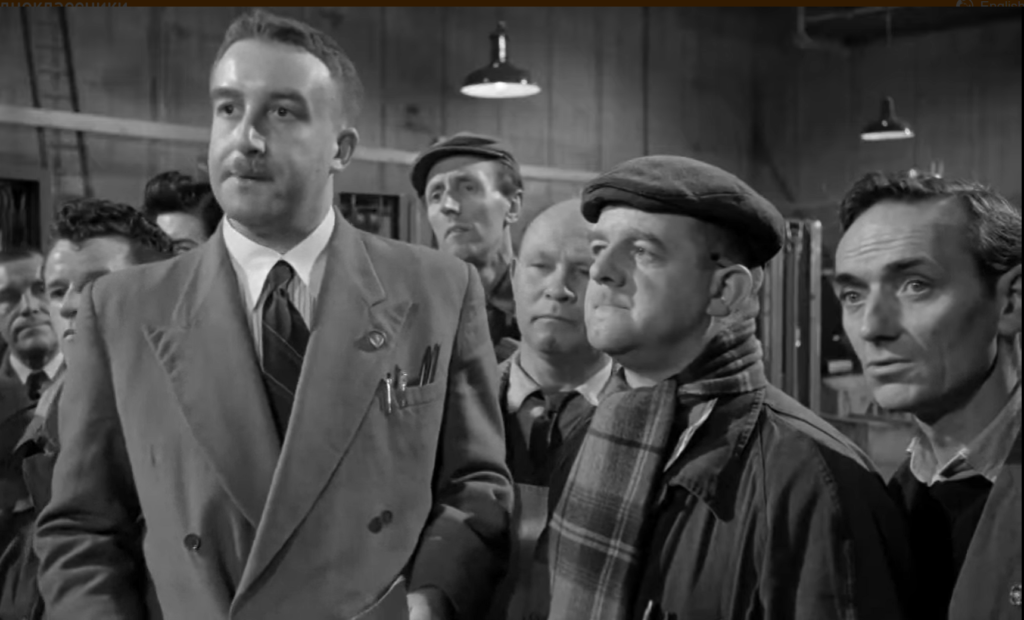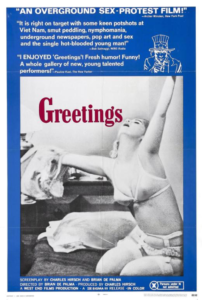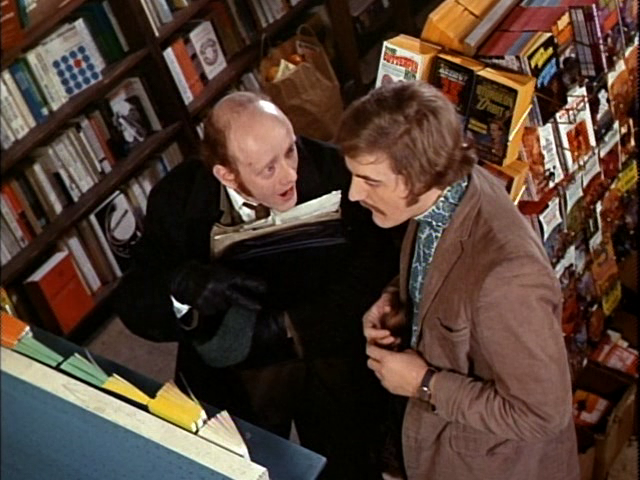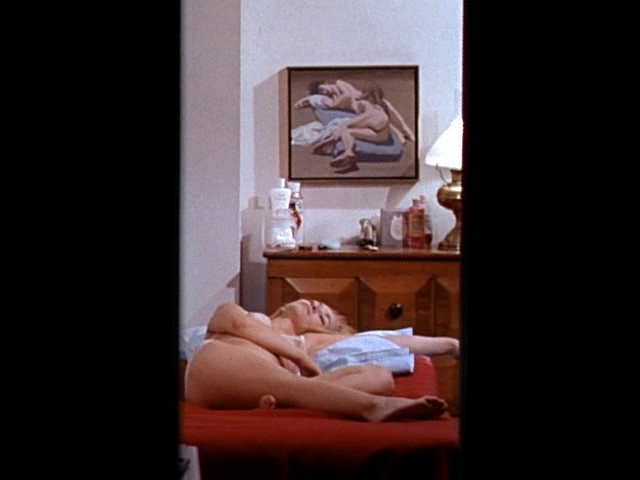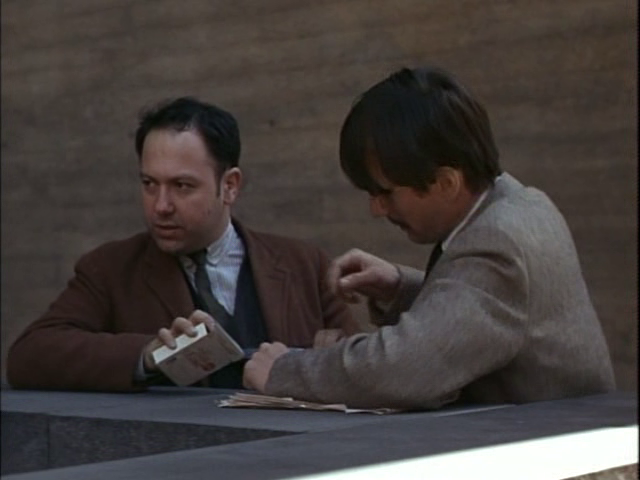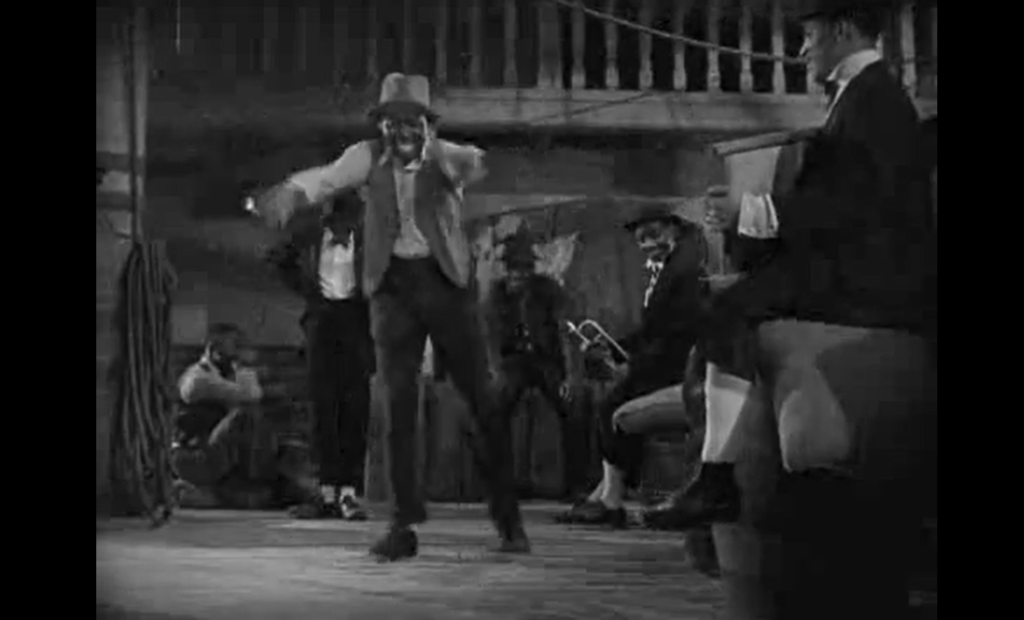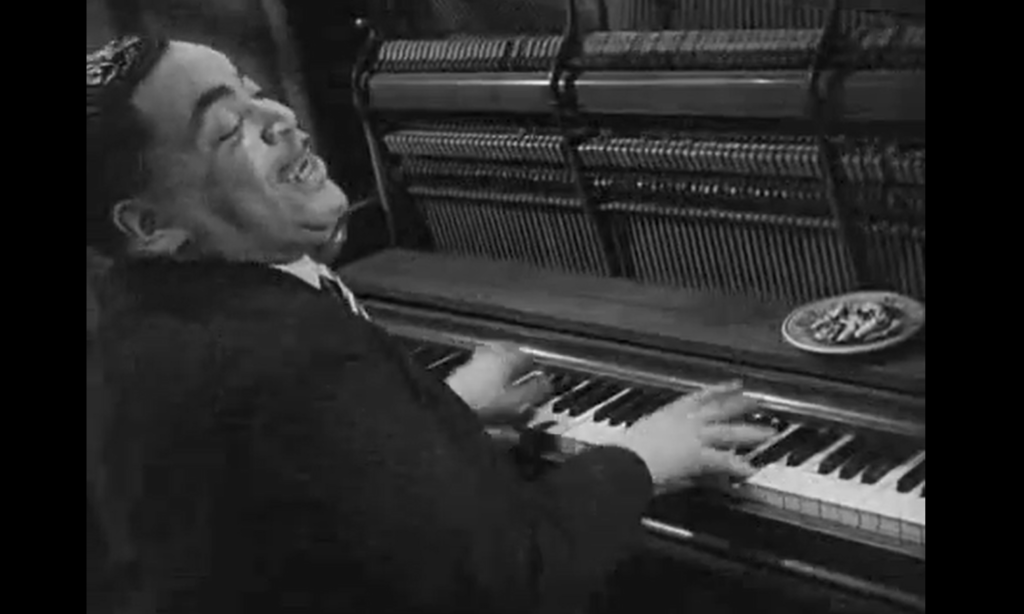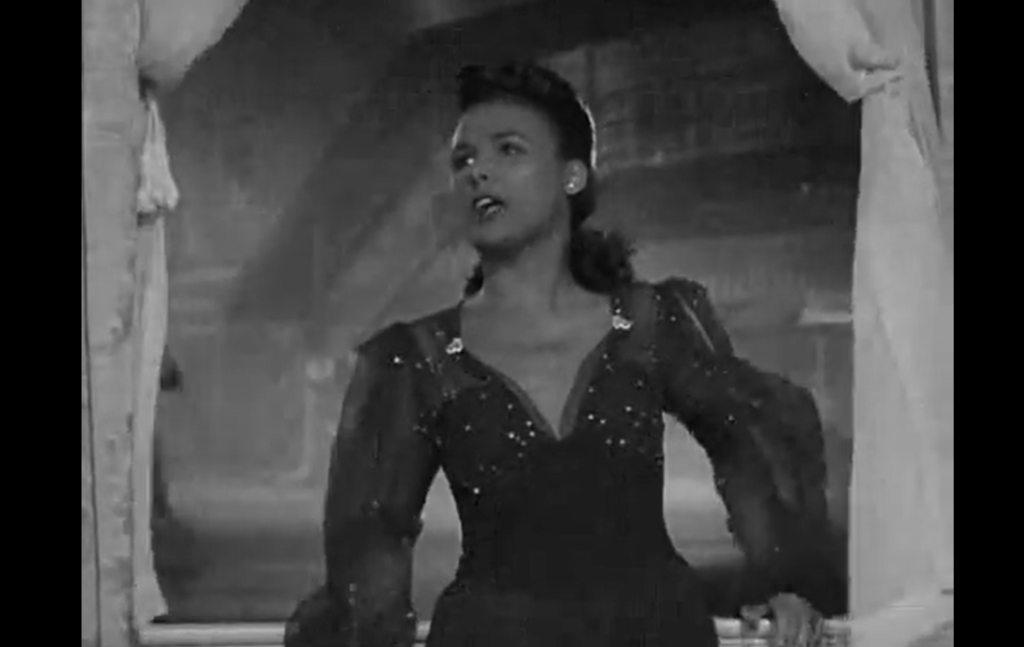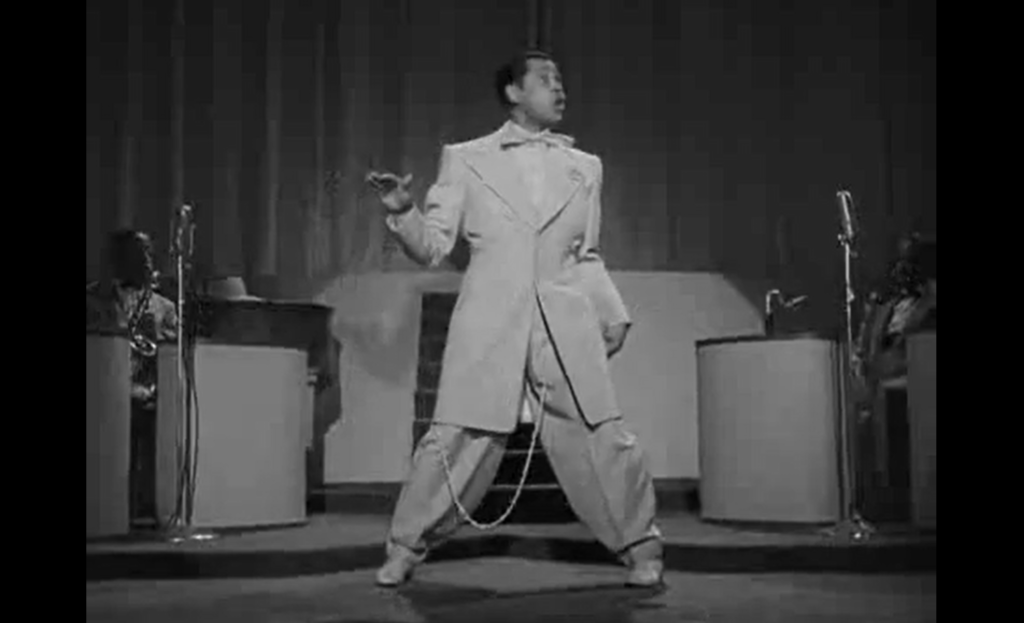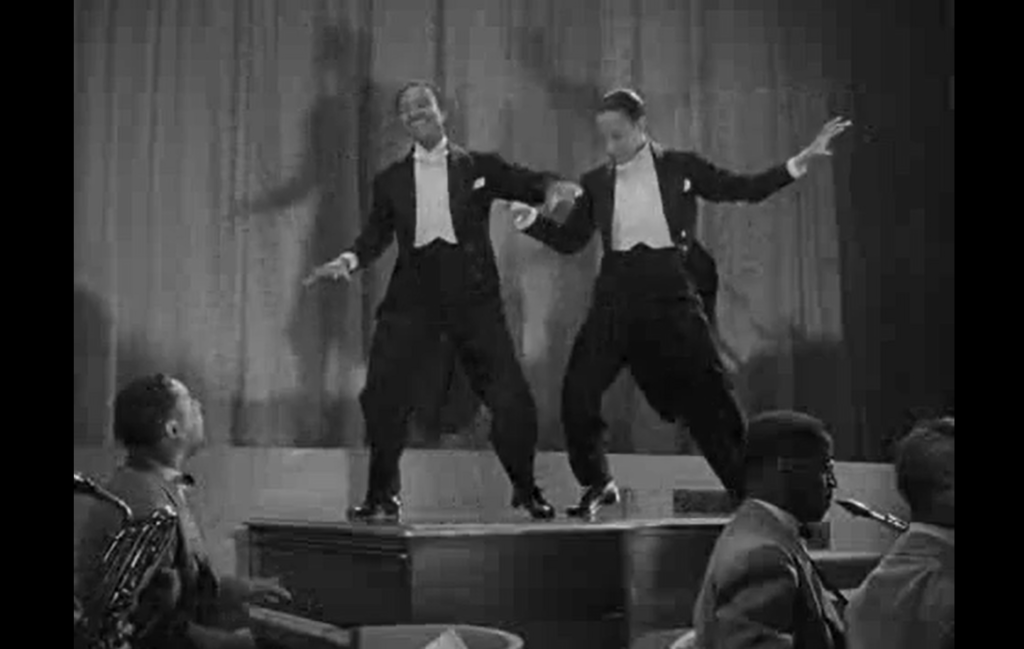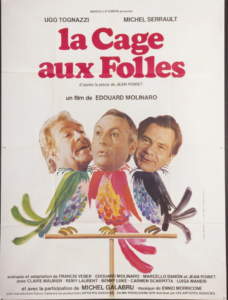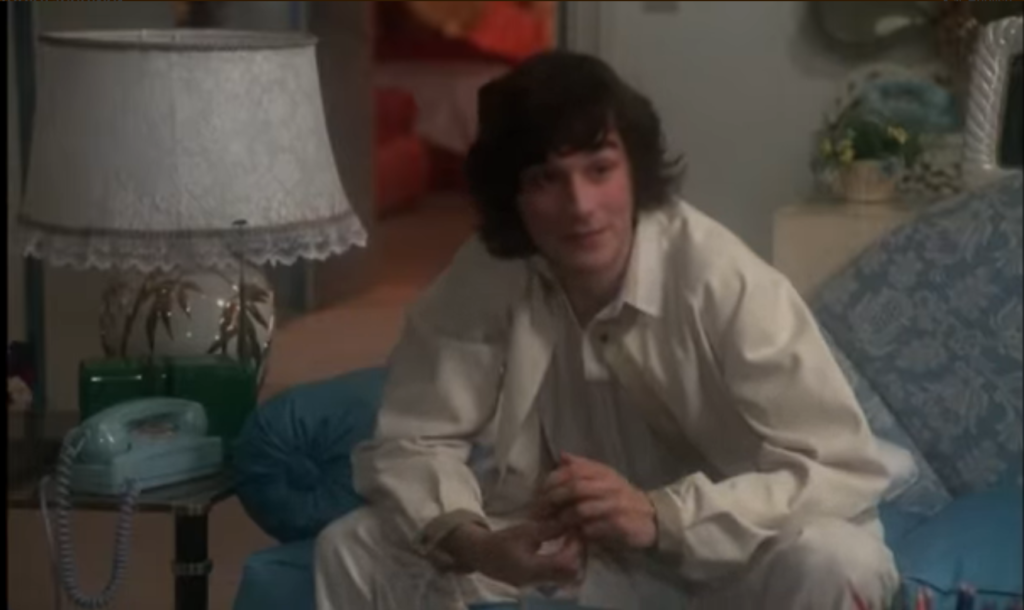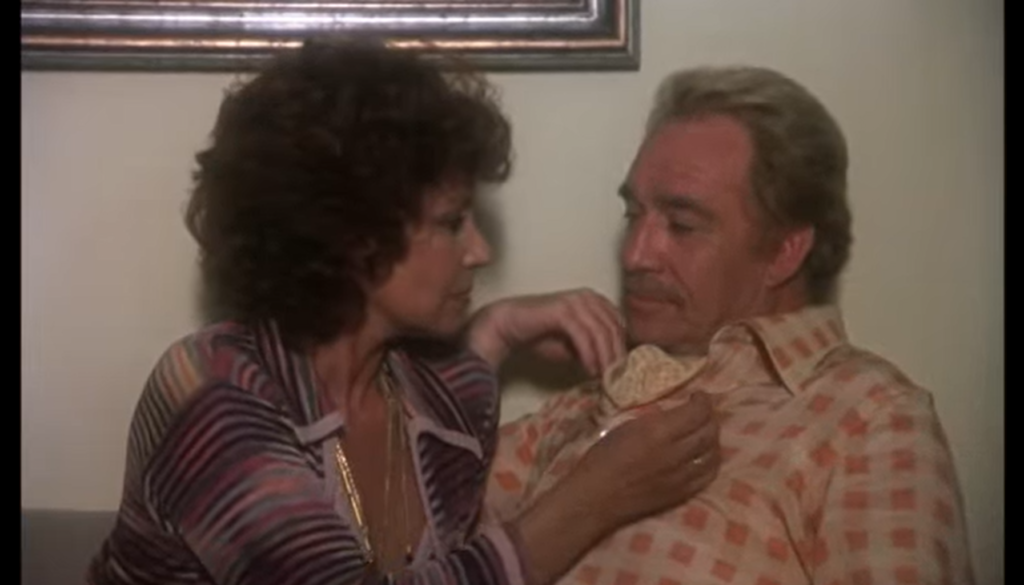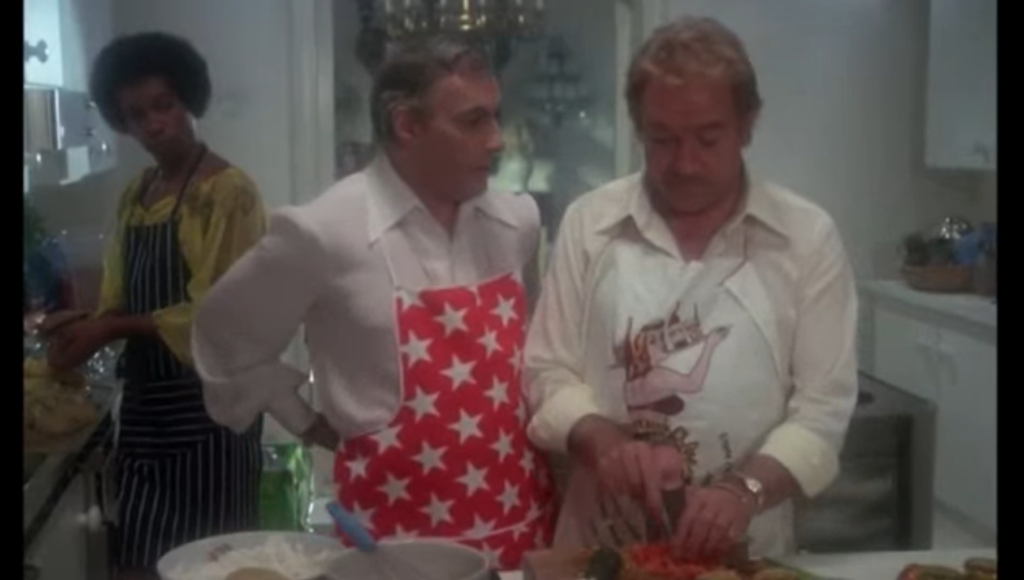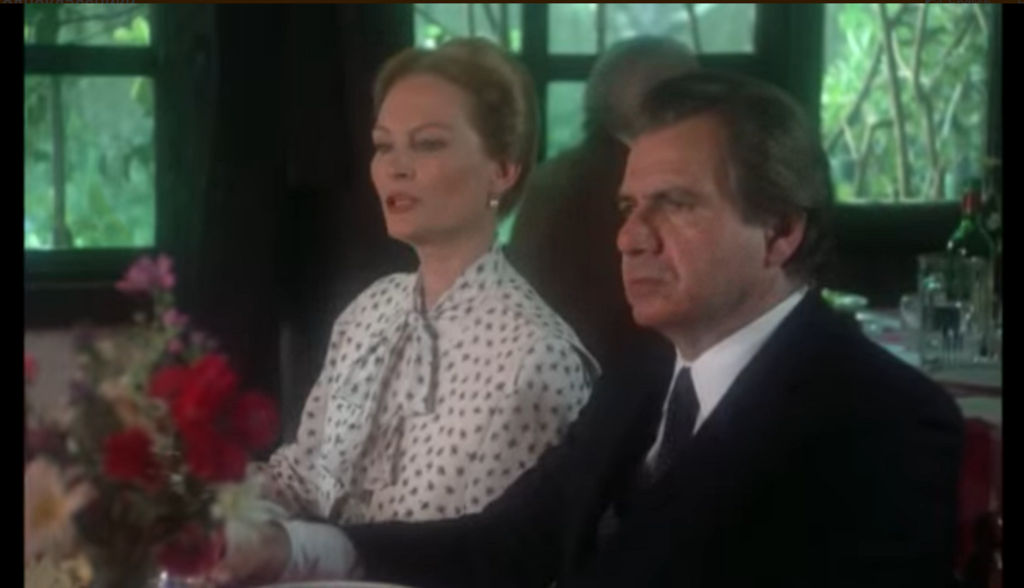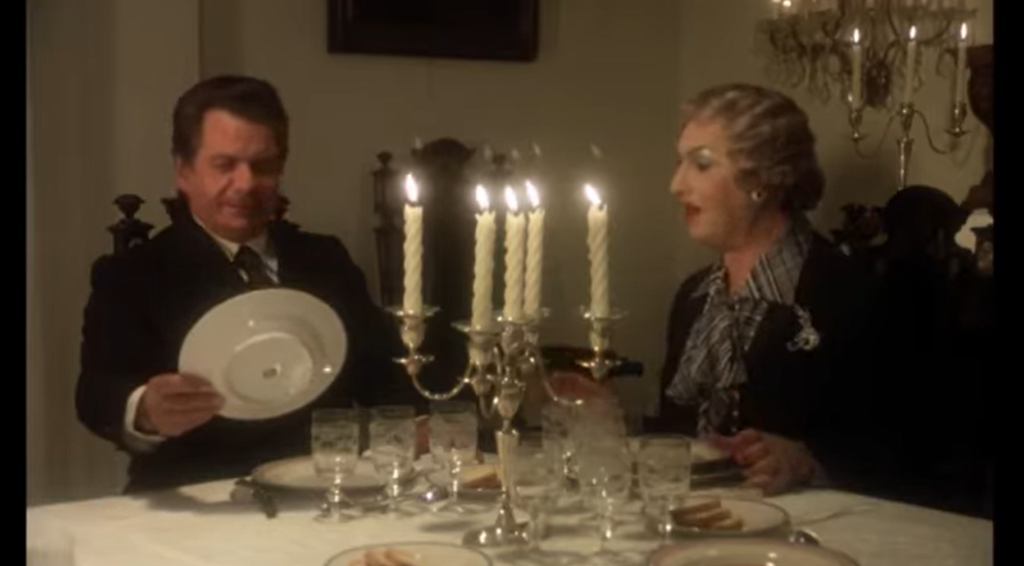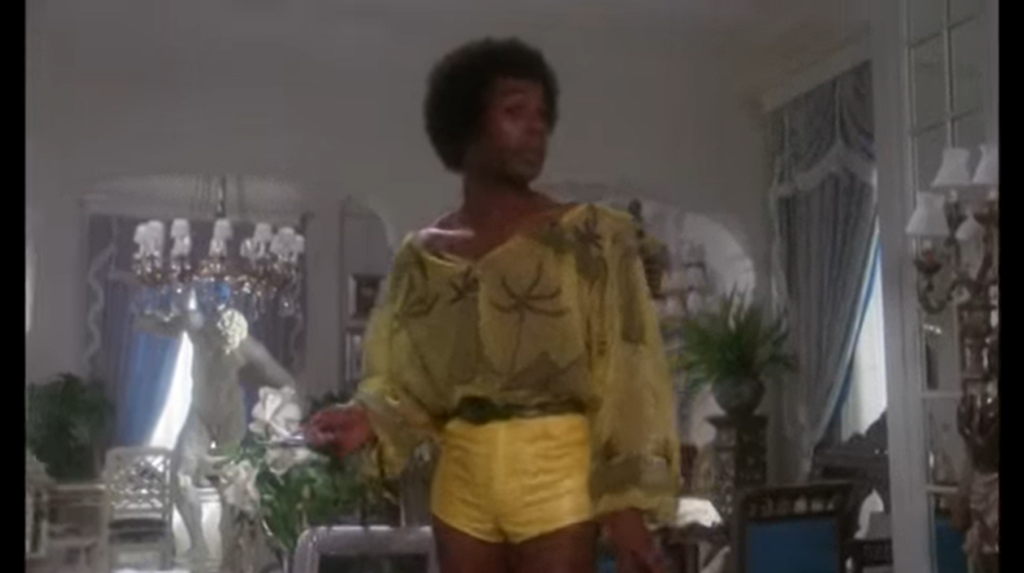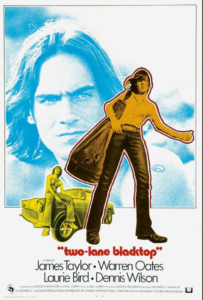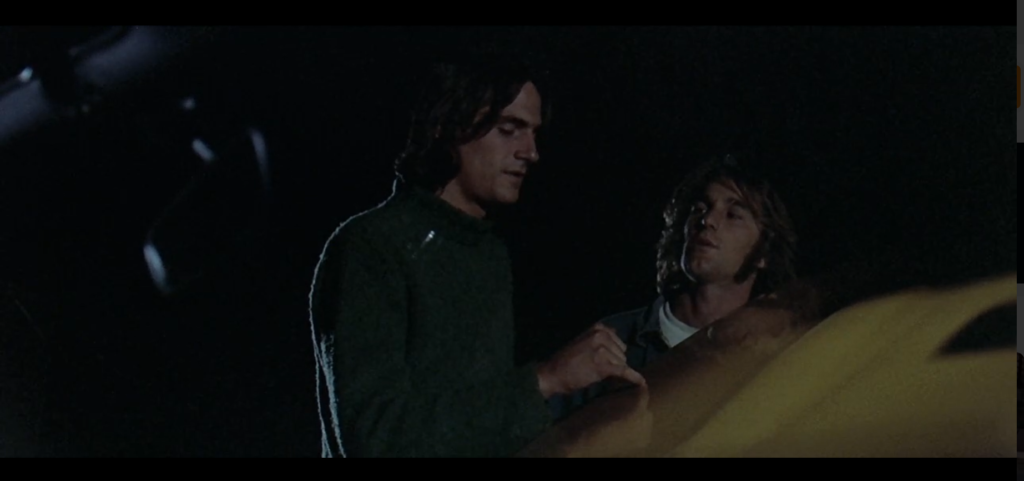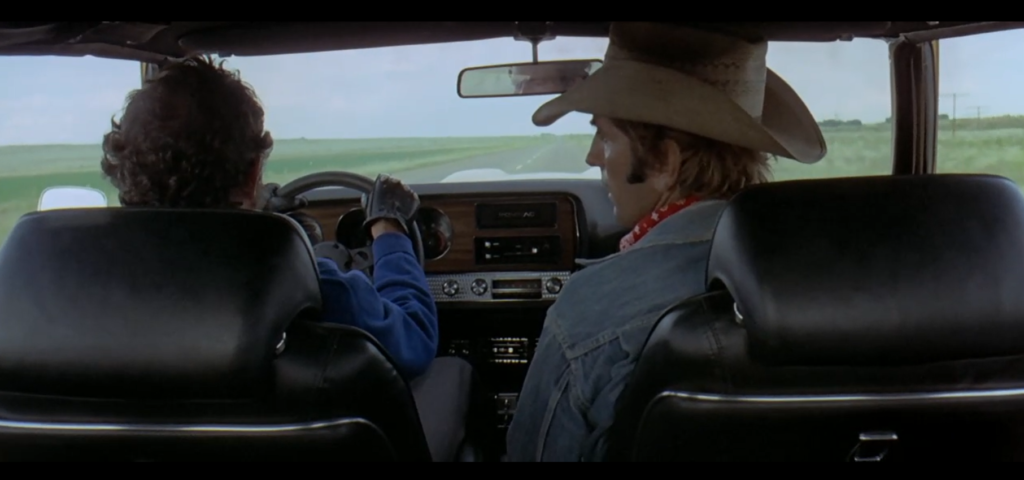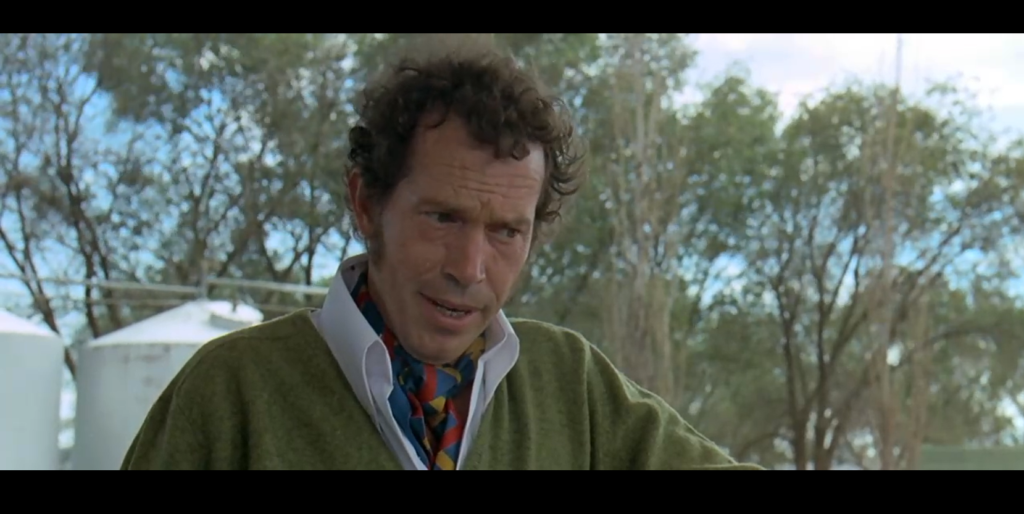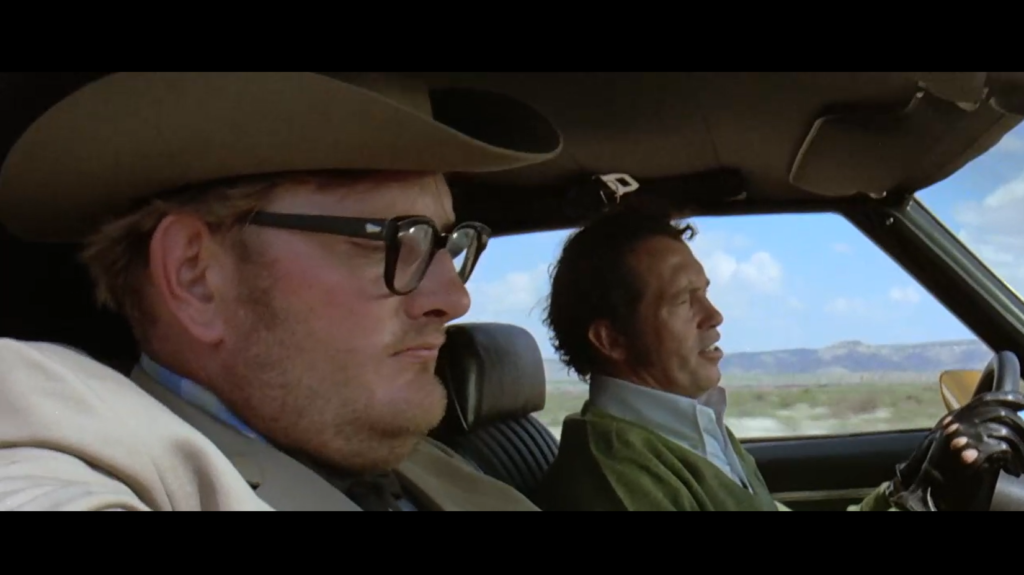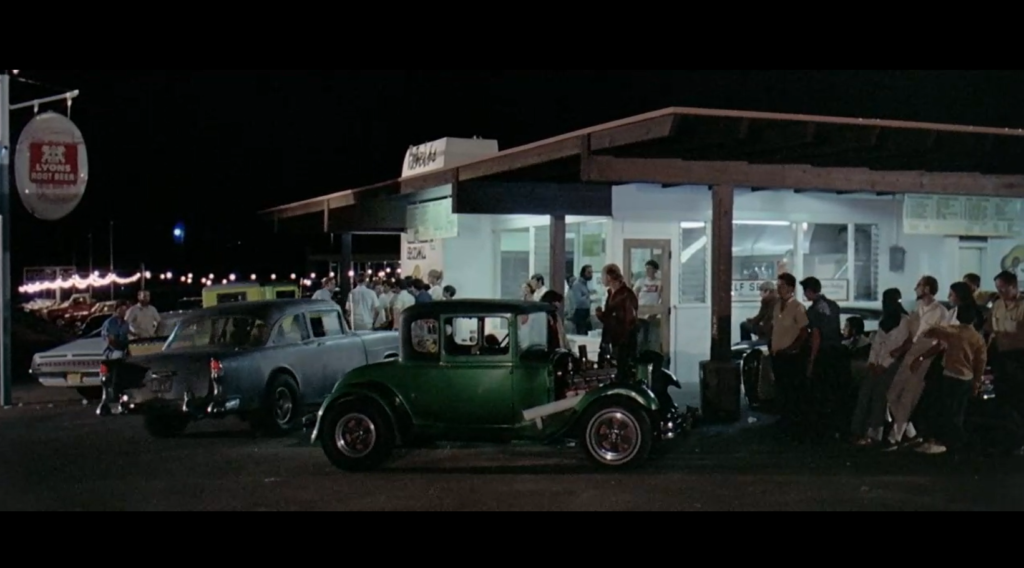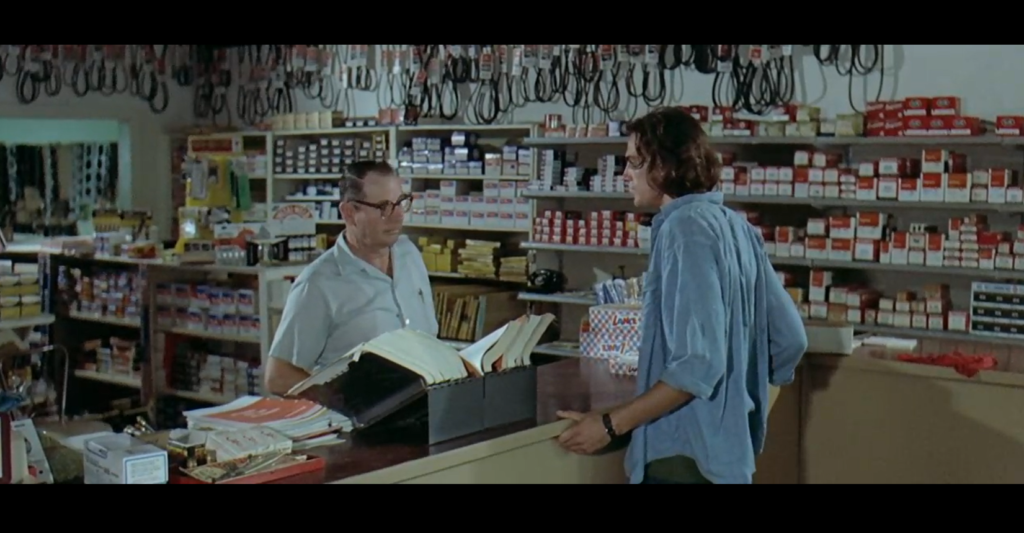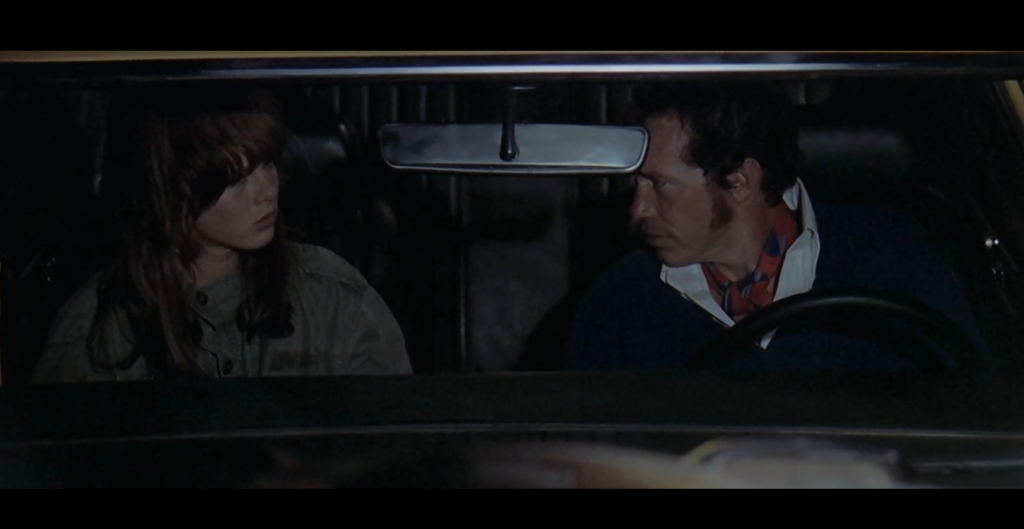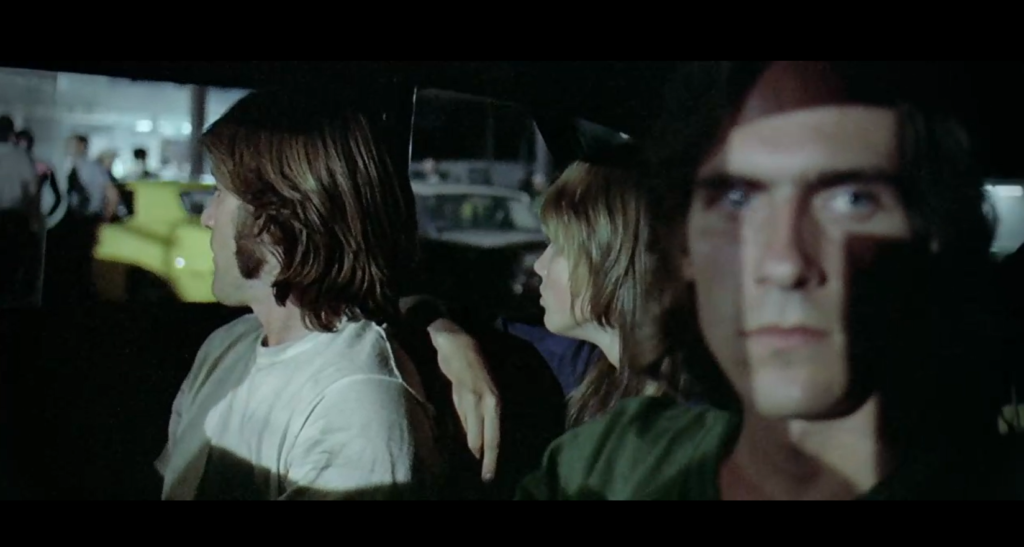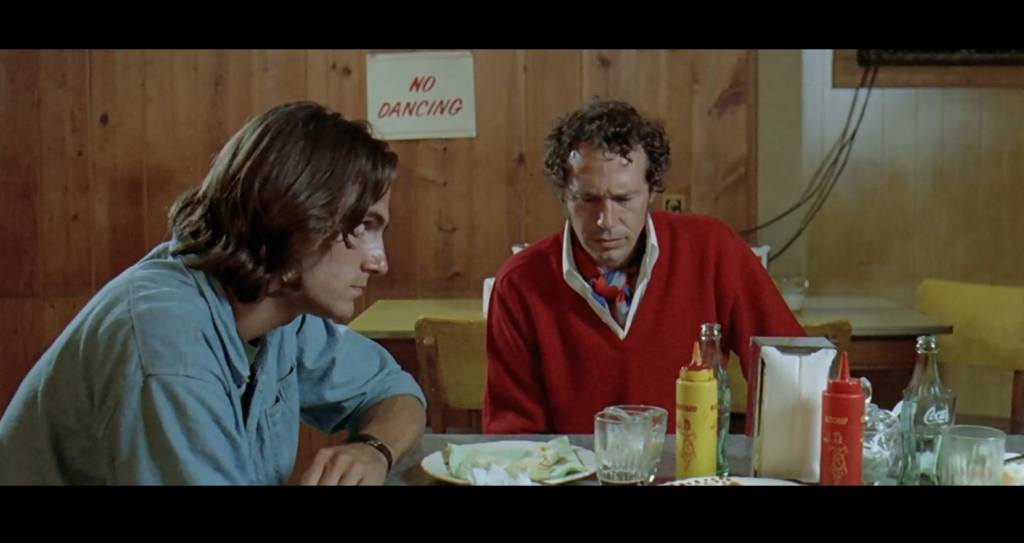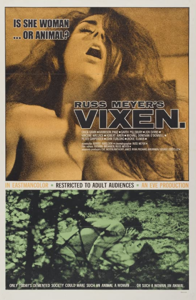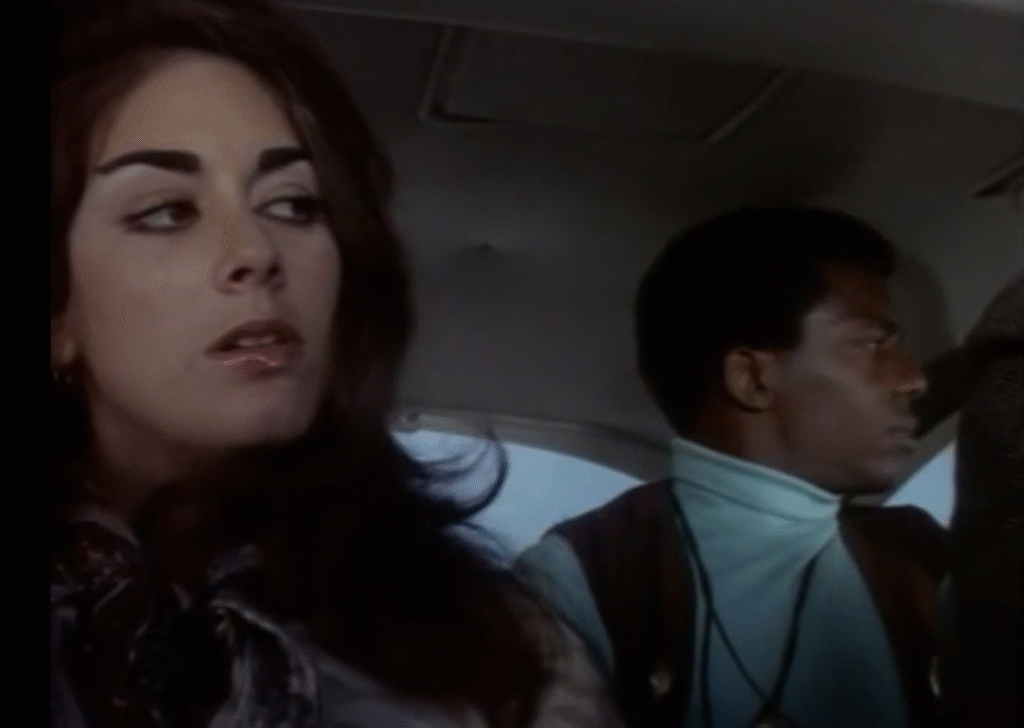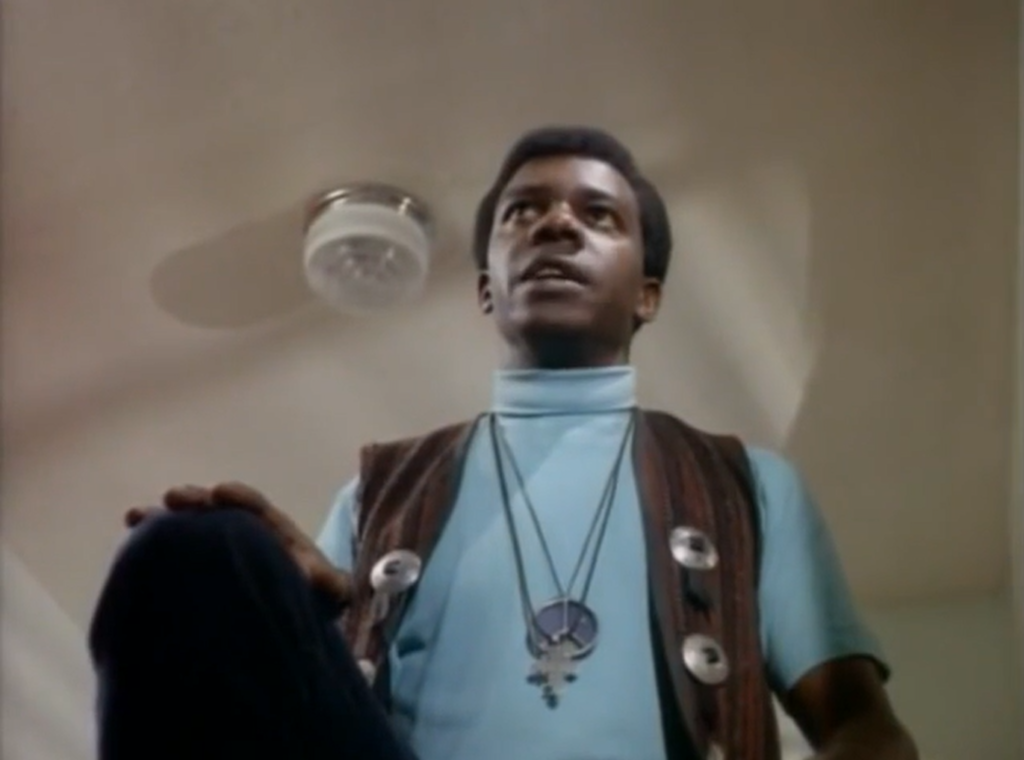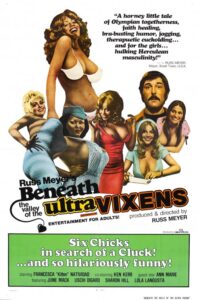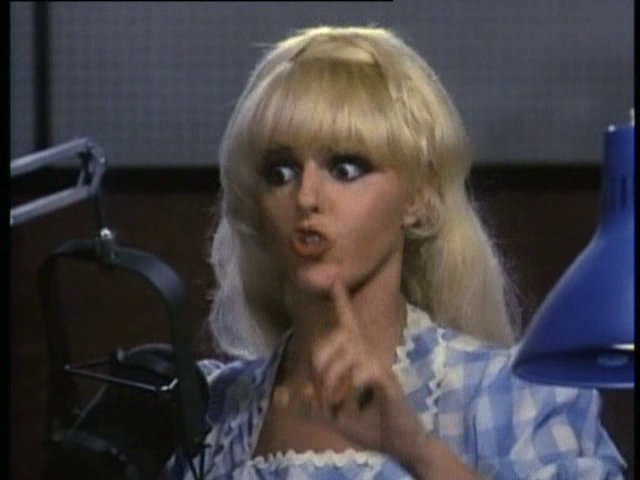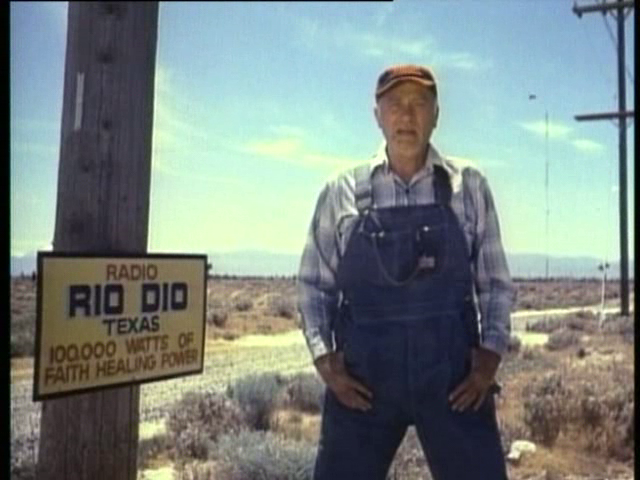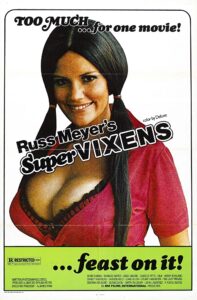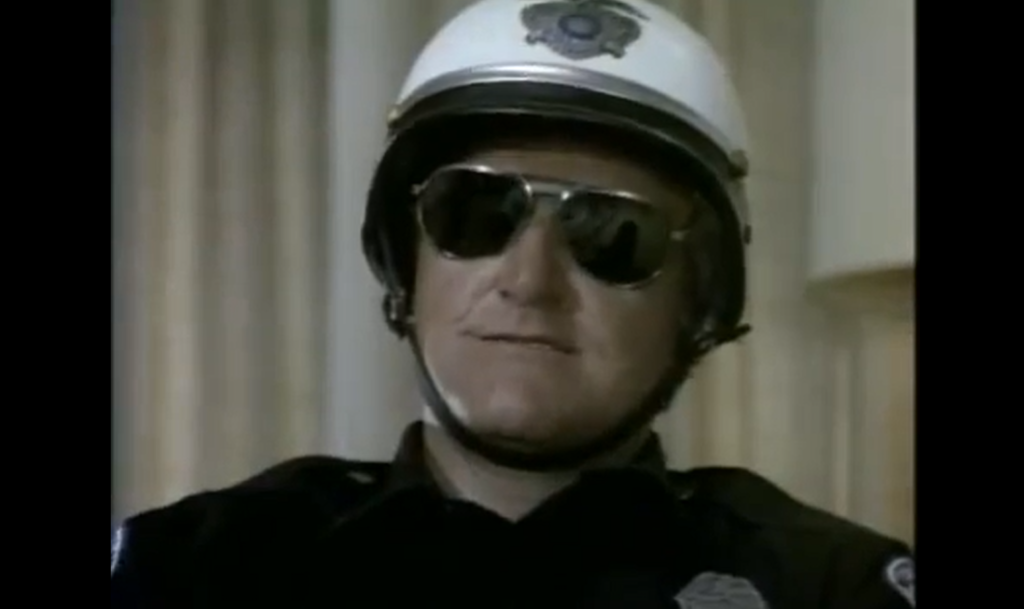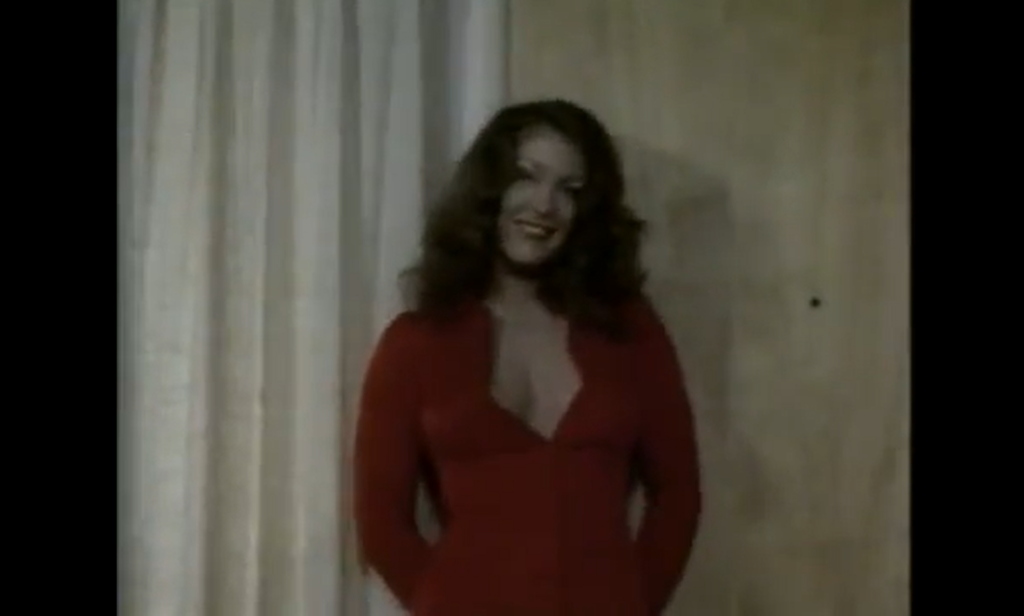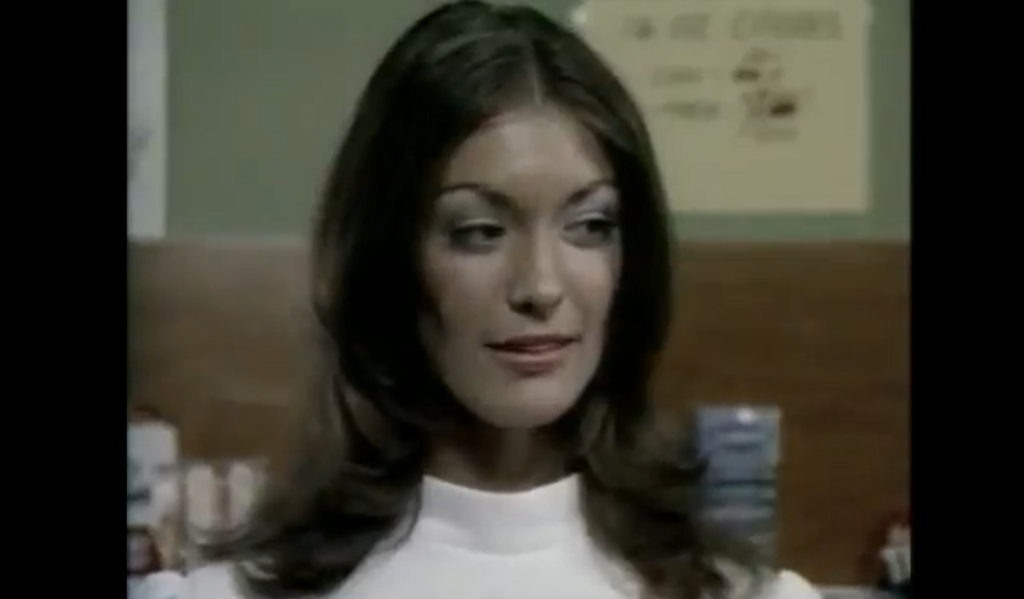|
Genres, Themes, Actors, and Directors:
- French Films
- Gangsters
- Obsessive Fans
- Opera
- Singers
Response to Peary’s Review:
Peary writes that this “goofy, glittery, dazzlingly stylish suspense thriller by first-time director Jean-Jacques Beneix became an immediate cult sensation in France and America,” noting that while “some critics complained that Beneix’s work was self-consciously (Pop) arty”, “surely the story, from a novel by Delacorta (Daniel Odier), is bizarre enough to warrant a wild style.” He points out that the protagonist, Jules (Andrei), “lives in one of Beineix’s fascinating sets (designed by Hilton McConnico): a dark loft full of stereo equipment, wrecked cars, and Pop art (including large photos of cars)”, and he notes that the “quirkiness of the film is evident in [the] three major character couplings: Jules, an 18-year-old, white, passive Frenchman, and Cynthia [Fernandez], the taller, 30-ish, black American performer:
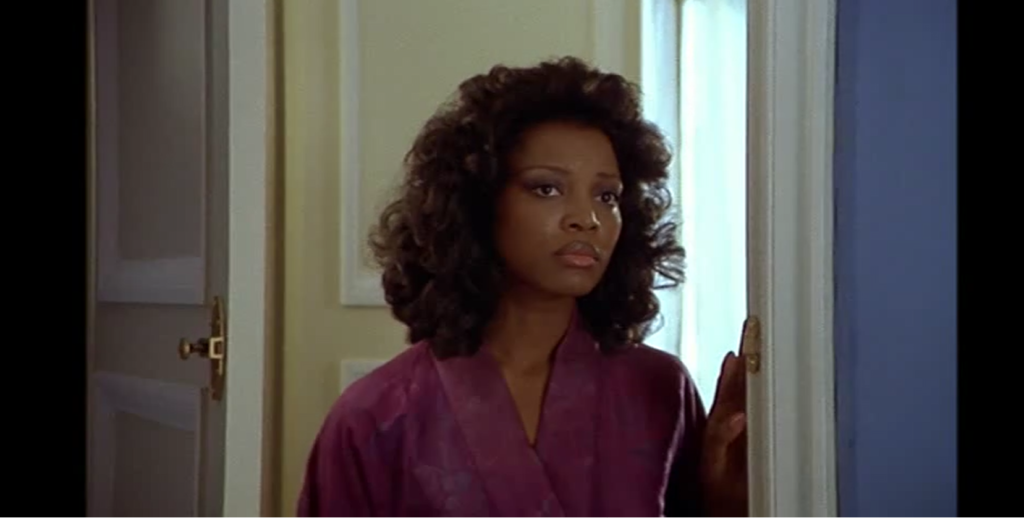
… Alba [Luu], a teenage, hedonistic Vietnamese shoplifter and Gorodosh [Bohringer], her adult, white, Zen-freak boyfriend; the tall, handsome, suave Latin thug [Damon] and his short, indented-faced, punk-garbed, blond, younger partner (Dominique Pinon is a memorable screen villain), who always has a Walkman blaring in his ears.”
Peary points out that “Beineix underscores [these] odd teams by mixing rock and classical music”, and that “visually, Beineix uses his frame like a Pop-art canvas, filling the spaces between his black, blue, and red images with white light, direct or reflected.” (Beineix’s DP was Philippe Rousselot.) He notes that Beineix is “thrilled with movement, so he places his characters on wheels (Jules’s moped, Gorodosh’s classic white Citroen, Alba’s roller skates, etc.) and lets the camera run wild, almost as if it had a life of its own. (One of the highlights is a mad car-motorcycle chase.)” He adds that Beineix “makes weird choices at every turn and very few don’t have big payoffs.”
Peary elaborates on his detailed analysis of this film in his Cult Movies 3 book, where he notes that “it is precisely Beineix’s determination to mix diverse elements such as opera and a lowbrow crime drama that makes the film so outrageous and entertaining”, and points out that Beineix’s “actors come in all shapes and sizes and from various backgrounds”. He argues that what the film’s survivors “have in common is a capacity to love people and love good music” — indeed, “love and music are shown to be pure, purifying forces”, while “the criminals are those people who prostitute love… or music…; in the minds of Delacorta and Beineix the businessmen who deal in record piracy are just as ruthless as down-and-dirty street criminals.”
Peary ends his lengthy Cult Movies review by noting that “the film is about how a singer’s lovely voice and a series of strange circumstances cause Jules, Cynthia, Alba and Gorodish to interact”, with the result “that all of them break out of their depressed past-obsessed states, reveal inner goodness…, find love, and make commitments to the future”. He notes that while this is a “cheery, sentimental theme that would seem out of place in typical low-budget crime thrillers”, he thinks “it’s one of the reasons Diva is such a crowd pleaser” — and I agree. This delightful, quirky, visually vibrant flick remains as unique as it was upon its release, and has held up remarkably well — there’s no other film quite like it, and I doubt there ever will be.
Redeeming Qualities and Moments:
- Vibrant cinematography
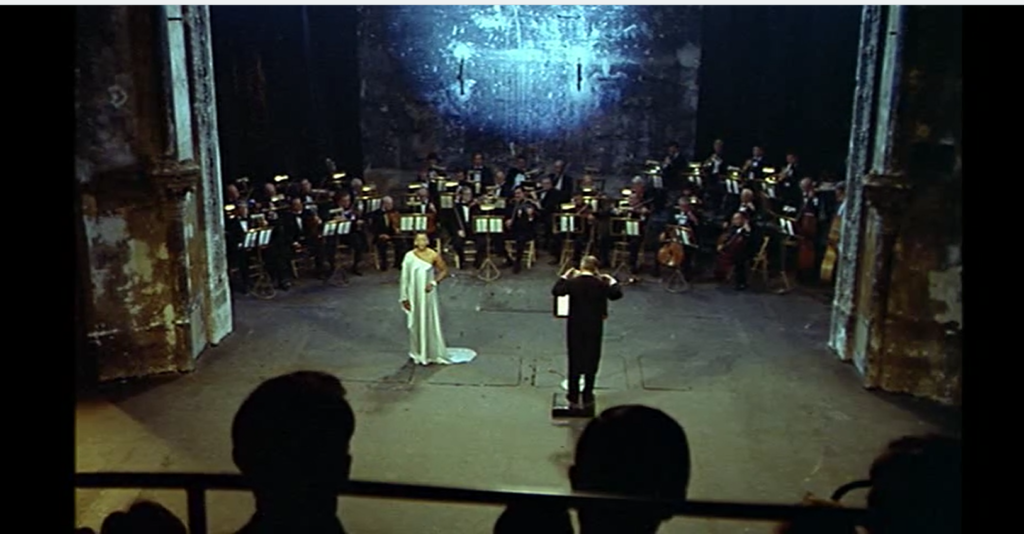
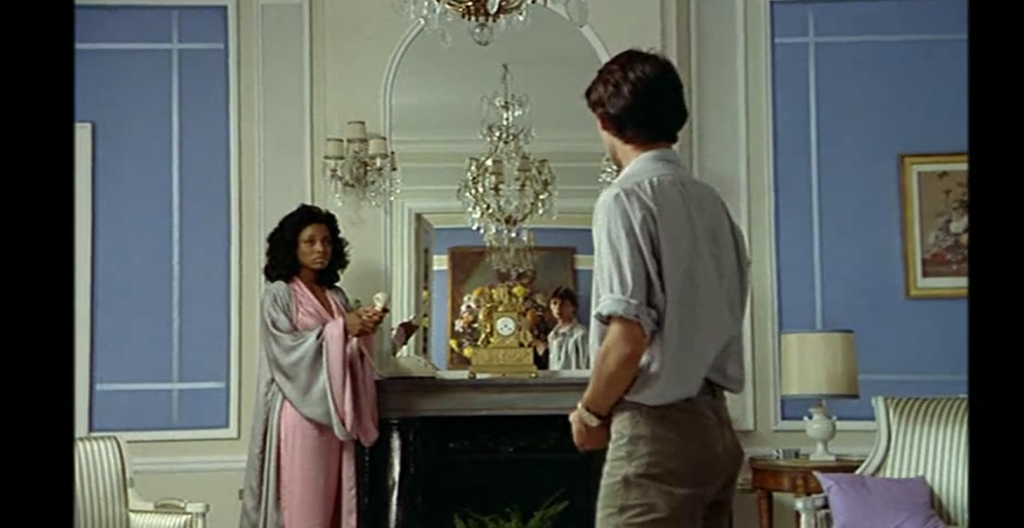

- Highly unique and stylized sets
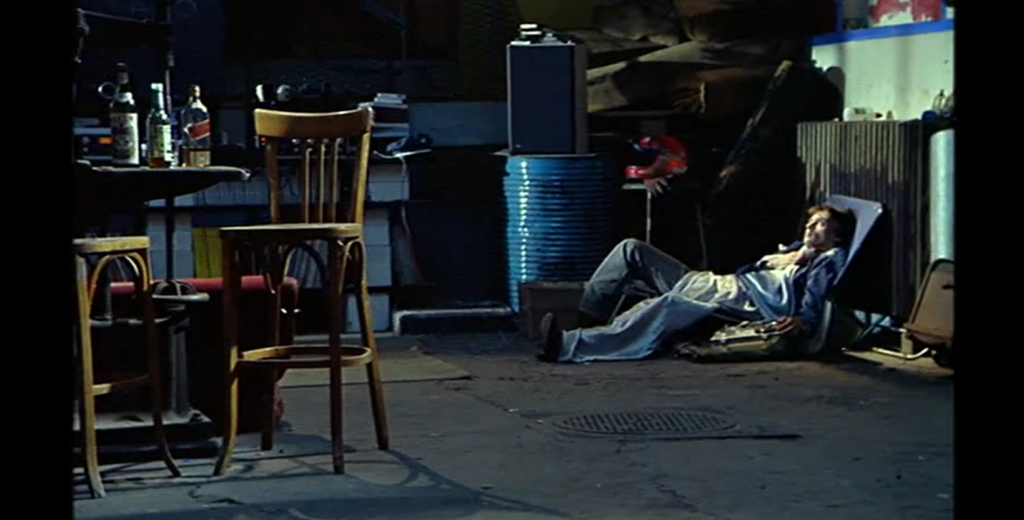

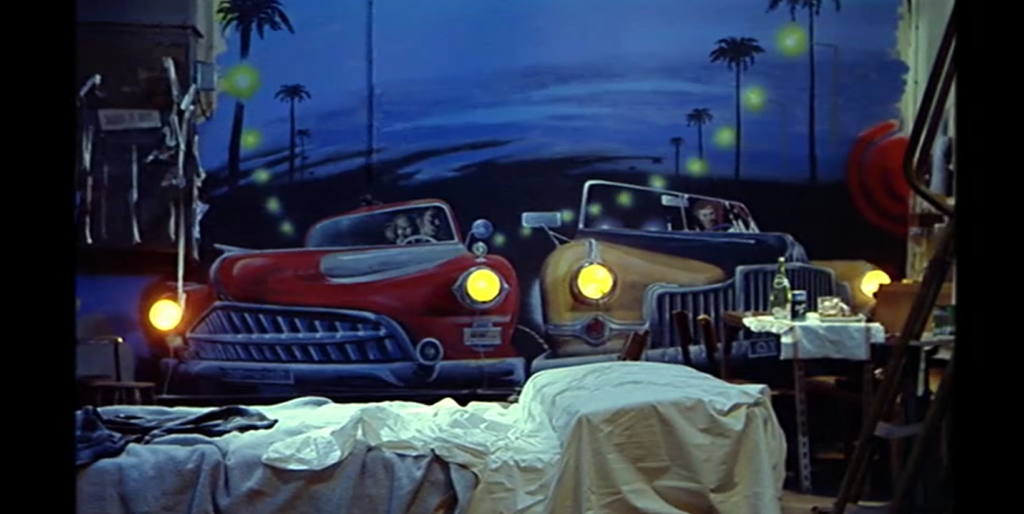
- The exciting moped/subway sequence
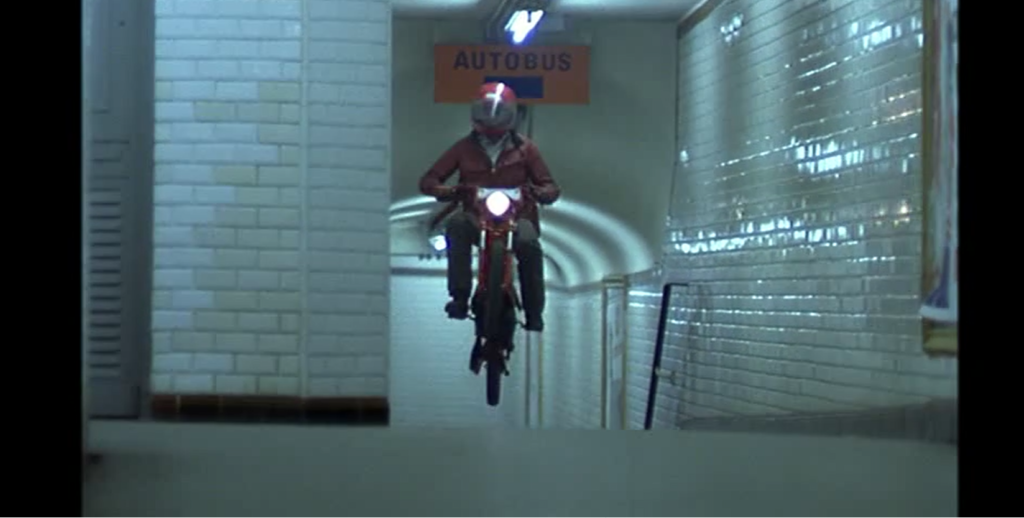
- Vladimir Cosma’s score
Must See?
Yes, as an enduring cult classic.
Categories
Links:
|
